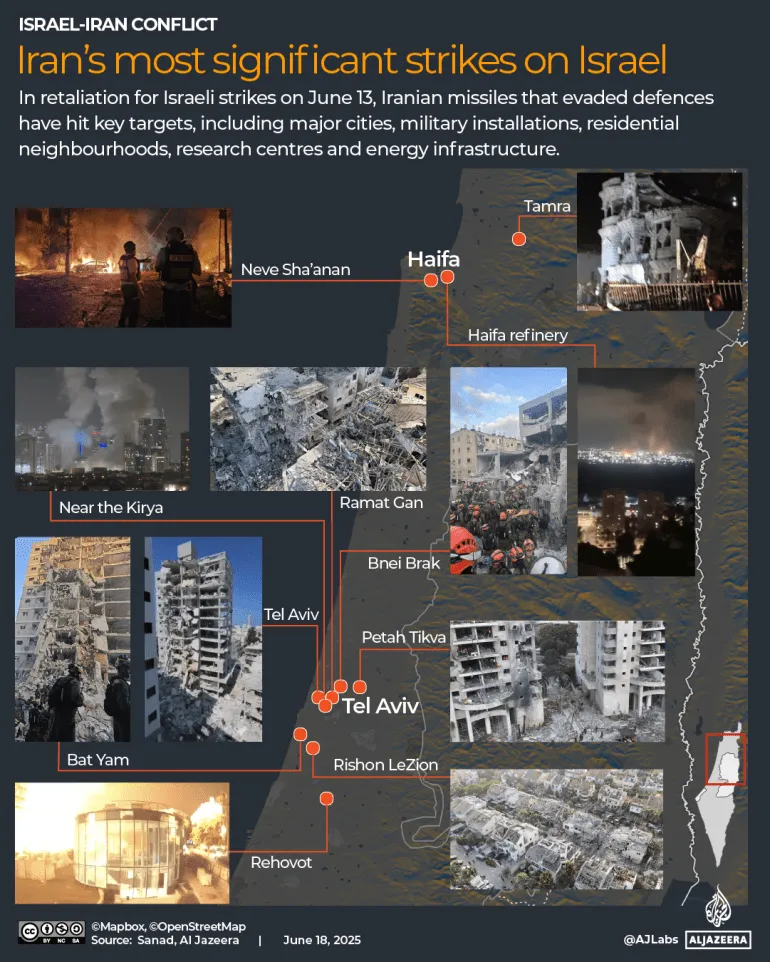The Iran–Israel conflict has reached one of its most volatile phases in years, involving drone strikes, ballistic missile attacks, and even U.S. military interventions. Despite a ceasefire announcement by former U.S. President Donald Trump, the fighting didn’t immediately stop. Tensions remain high across the Middle East, with U.S. bases and oil markets caught in the crossfire.
This post explores the most recent developments, what happened after the ceasefire announcement, and the long, complicated path that led both nations—and the world—into this explosive chapter.
Latest Developments: The Ceasefire That Wasn’t
Trump Announces Ceasefire, Violence Continues
On June 24, 2025, former U.S. President Donald Trump declared that Iran and Israel had agreed to a full ceasefire, mediated via undisclosed diplomatic backchannels. The announcement sent brief waves of optimism across global markets and diplomatic circles.
However, within hours, the truce began to unravel.
Israel Reportedly Strikes After Ceasefire
According to sources including Reuters and Axios, Israel launched airstrikes on an Iranian radar site near Tehran just 90 minutes after the ceasefire window began. Israel claimed the attack was a defensive response to continued Iranian rocket fire that hadn’t stopped on time.
Iran’s Foreign Ministry responded harshly, accusing Israel of breaking the truce and stating:
“Israel’s violation of the agreement renders the ceasefire void.”
Iran Retaliates with More Missile Fire
In return, Iran fired missiles into southern Israel, most of which were intercepted by the Iron Dome system. Though no deaths were reported, several injuries and infrastructure damages occurred.
Trump publicly rebuked both countries, stating:
“They agreed to peace—and then Israel went ahead and unloaded a load of bombs. This wasn’t the deal.”
Where We Are Now: A Fragile Pause
As of June 25, 2025, the situation appears to have stabilized. After a shaky start, the ceasefire is mostly holding, with both sides scaling back major operations but remaining on high alert. Airspace over parts of Israel and Iran remains restricted, and Qatar, which was briefly attacked during the exchange, has resumed U.S. military operations from Al Udeid base.
International observers caution that this is not a true peace, just a tactical pause. Israel continues surveillance flights over Lebanon and Syria, while Iran has mobilized missile batteries in its western provinces.
How Did It Get to This Point?
To understand today’s events, one must look at decades of rising tensions, flashpoints, and military actions that have built up between Iran, Israel, and the United States.
Historical Timeline: Iran–Israel–U.S. Escalation
1. Years of Shadow War
For years, Iran and Israel have fought a covert war. Israel, fearing Iranian nuclear ambitions, has carried out cyber attacks (like Stuxnet), sabotage of nuclear facilities, and targeted killings of Iranian scientists. Iran has responded with support for Hezbollah and Hamas, as well as attacks via proxies in Syria and Iraq.
2. Iranian Missile Program & Nuclear Tensions
Iran’s continued advancement in long-range missile technology and uranium enrichment—despite international sanctions—has kept Israel on edge. The collapse of the JCPOA (Iran nuclear deal) in 2018 added fuel to the fire, leading to direct Israeli airstrikes on facilities inside Iran starting in 2024.
Flashpoints That Fueled the Current Crisis
June 13, 2025 – Israeli Surprise Strikes
Israel launched a coordinated attack on multiple Iranian nuclear sites using Mossad drones and airstrikes, reportedly destroying two enrichment facilities and killing several high-ranking IRGC officers.
June 14–16, 2025 – Iranian Retaliation
Iran responded by launching over 70 missiles and drones into Israeli territory, causing damage in Tel Aviv and killing civilians in Beersheba. Several Iranian-made Sejjil missiles landed near hospitals and government buildings.
June 19, 2025 – U.S. Enters the Conflict
Amid escalating threats to regional stability, the United States carried out airstrikes on three Iranian nuclear bases, using bunker-buster bombs. These were designed to degrade Iran’s nuclear production capacity.
June 21, 2025 – Iran Attacks U.S. Base in Qatar
In a direct response to U.S. intervention, Iran launched 14 ballistic missiles at the Al Udeid Air Base in Qatar, which hosts over 10,000 U.S. personnel. The missiles were intercepted, but the attack marked a major shift: Iran was now targeting U.S. military assets directly.
June 22–24, 2025 – Global Alarm and Ceasefire Proposal
Following Trump’s ceasefire call, both sides appeared to agree—but violated the terms within hours. While no formal diplomatic framework exists, pressure from the EU, Qatar, and the UAE has helped de-escalate, for now.
Global Reactions
- United Nations: Called for an immediate ceasefire, monitorin,g and civilian protection
- Qatar & UAE: Urged restraint and offered to host neutral diplomatic talks
- United States: Trump urged both sides to “stand down or face consequences,” but has not authorized further military action as of June 25
- Russia & China: Condemned the U.S. airstrikes and warned of “a new front in global instability”
Strategic Takeaways
- Ceasefire remains fragile
Without formal enforcement mechanisms or third-party monitors, this pause may not last. - U.S. bases in the Gulf are high-risk
Future Iranian strikes may again target Qatar or UAE installations if the situation flares up. - Iranian proxies remain active
Hezbollah, Houthis, and Shiite militias in Iraq could be drawn into a wider conflict. - Oil prices
WTI and Brent prices spiked over $95 per barrel during peak fighting; markets remain volatile due to Gulf tensions.
External Links
- Reuters analysis of the latest ceasefire fragility & strikes
Read more: “Israel signals Iran campaign can end soon but much hinges on Tehran” (reuters.com, reuters.com) - Reuters report on U.S. airstrikes & nuclear site impact
Read more: “US strikes failed to destroy Iran’s nuclear sites, intelligence report says” (reuters.com) - Reuters live images of the conflict aftermath
View gallery: “Latest pictures from the Israel‑Iran barrages” (reuters.com)
Conclusion
The Iran–Israel conflict is no longer confined to threats and proxy skirmishes. With direct state-to-state attacks, U.S. airstrikes, and retaliation on American soil, the Middle East stands at the edge of full-scale war. Though the guns are mostly quiet today, history shows that truces without trust rarely hold.
Global powers now have a brief window to negotiate a sustainable peace—or risk being dragged into the next round.



